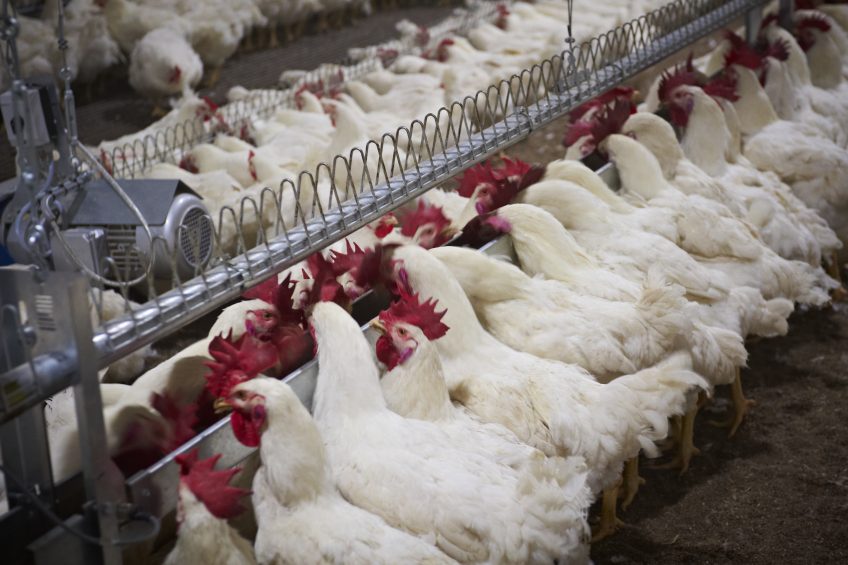A new look at the male feeder

Sex separate feeding is a profitable management tool. Fertility rates increase while males can be kept at a more healthy weight. Despite these facts, over the years little attention has been given to the development of a feeding system that meets the requirements of the fast growing birds. A new male feeder offers solutions.
Breeder specialists of a genetics company in the Netherlands, having reviewed the existing male feeding systems, concluded that some improvements were needed to meet the requirements of the modern male breeder. Following talks with several equipment manufacturers, VDL’s product development specialists took on the challenge to develop a brand new concept: the Matrix male feeder.
They recognised that almost all male breeder feeders are a spin-off of pan feeding systems. Most of the technology is the same, with the exception that when the pan is winched down the breeder hens cannot get at it.
With these issues in mind some breeder farmers in the Netherlands have experimented with troughs mounted at the side wall of the breeder house. Based on these experiments one of the breeder specialists was invited by VDL to give advice on how an automatic trough feeder (as an alternative for a male pan feeder system) should look like. Trials with selected models showed that when the obvious V-shape trough was replaced with a flat bottom trough, similar to that of a chain feeder, major improvements in bird behaviour and performance were seen.
Most of the breeder farmers who installed VDL’s Matrix male feeder did so because the system could be placed against the side wall of their breeder house, leaving more open floor space available for the birds to mate. Dutch breeder farmer Gert van den Top is one of those farmers. He did not have space for an extra male feeder line in his houses but is enthusiastic about the new feeder he mounted to the side wall.
His experience is that during feeding all males are nicely positioned in one row side by side, and show less stress than before. Having the males side by side makes the evaluation of their development much easier. While Van den Top’s installation of the feeder was too recent to talk about results, he expects satisfying improvements.
His colleague Stefan Donkers has more experience. He has a few breeder houses and installed the Matrix in a new house allowing him to compare the system with the pan feeder system he has installed in his other houses. When asked about his experiences he started off telling the advantages he noticed during the 40 weeks of the flock.
“All males receive the same amount of feed at the same time, which results in a minimum of unrest among the males. They do not have to fight for their spot at the feeder and they all receive the same amount of feed. The slow speed at which males can eat forces them to spend more time at the feeder, giving the less dominant males more time to eat resulting in a better performance and better feather condition. Not only the males get more feeding time, the females also can quietly eat without being disturbed by a male,” says Donkers.
Join 31,000+ subscribers
Subscribe to our newsletter to stay updated about all the need-to-know content in the poultry sector, three times a week. Beheer
Beheer








 WP Admin
WP Admin  Bewerk bericht
Bewerk bericht